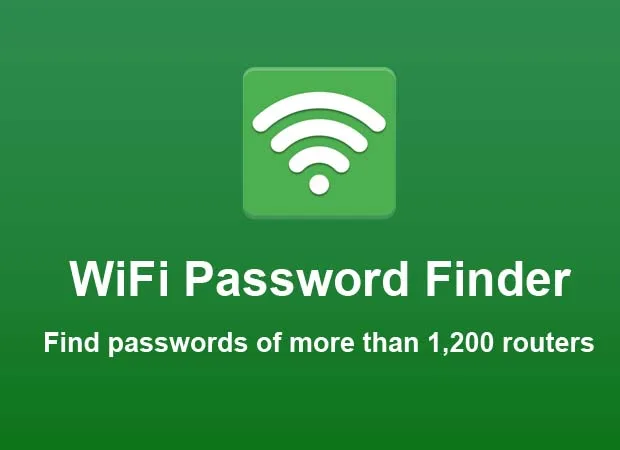In our hyperconnected world, WiFi has become an essential part of our daily lives. Whether at home, work, or on the go, we rely on WiFi to stay connected to the internet. However, there’s one pesky problem that often arises – forgetting the WiFi password. It happens to the best of us. You’re at a friend’s house, a hotel, or a café, and you need to connect to the WiFi, but you can’t remember the password. Fret not, because today we’re diving into the world of WiFi password finder tools – your ultimate solution to this common conundrum.
Understanding WiFi Passwords
Before we delve into WiFi password finder tools, let’s first understand what WiFi passwords are and how they work. A WiFi password, also known as a network security key or passphrase, is a combination of letters, numbers, and symbols used to authenticate and connect devices to a wireless network. WiFi passwords are essential for securing your network and preventing unauthorized access.
WiFi passwords are typically set by the network administrator or the person who set up the wireless router. They are often displayed as a series of dots or asterisks for security reasons, making them difficult to decipher. While this is great for security, it can be frustrating when you need to connect a new device to the network or share the password with guests.
Introducing WiFi Password Finder Tools
WiFi password finder tools are software applications or online services designed to help you retrieve or recover WiFi passwords from wireless networks you’ve previously connected to. These tools work by scanning your device’s stored WiFi networks and displaying the passwords in plaintext or encrypted form, depending on the security protocols used.
How WiFi Password Finder Tools Work
WiFi password finder tools utilize various methods to retrieve WiFi passwords, depending on the operating system and security measures in place. Here’s a breakdown of the common techniques used:
- Scanning Stored WiFi Profiles: WiFi password finder tools scan your device’s stored WiFi profiles or configurations to retrieve passwords for networks you’ve previously connected to. These passwords are usually stored in encrypted form within the device’s operating system.
- Decryption: In some cases, WiFi password finder tools employ decryption algorithms to extract passwords from encrypted storage locations on your device. This process involves deciphering the encryption keys used to protect the stored passwords.
- Brute Force Attacks: In more advanced scenarios, WiFi password finder tools may attempt to crack the WiFi password using brute force attacks. This method involves systematically trying every possible combination of characters until the correct password is found.
- Router Access: Some WiFi password finder tools may interface directly with the router to retrieve the password, especially if default or weak credentials are still in use.
Types of WiFi Password Finder Tools
WiFi password finder tools come in various forms, including:
- Desktop Applications: These are standalone software applications that you can install on your computer to retrieve WiFi passwords stored on that device.
- Mobile Apps: Similar to desktop applications, mobile apps are designed to run on smartphones and tablets, allowing you to recover WiFi passwords on the go.
- Online Services: There are also online services that claim to retrieve WiFi passwords remotely, though caution should be exercised when using these services due to security concerns.
Pros and Cons of WiFi Password Finder Tools
Like any technology, WiFi password finder tools have their own set of advantages and disadvantages:
Pros:
- Convenience: WiFi password finder tools provide a convenient way to retrieve forgotten passwords without the need to contact the network administrator or reset the router.
- Time-Saving: Instead of manually searching through settings or contacting the network owner, WiFi password finder tools can quickly recover passwords in a matter of seconds or minutes.
- Useful in Emergencies: In situations where immediate internet access is required, such as during travel or emergencies, WiFi password finder tools can be a lifesaver.
Cons:
- Security Risks: Using WiFi password finder tools poses inherent security risks, especially if they require elevated privileges or access to sensitive information stored on your device.
- Legality Concerns: Depending on your jurisdiction and the intended use of the tool, retrieving WiFi passwords without proper authorization may be illegal or violate privacy laws.
- Compatibility Issues: WiFi password finder tools may not work on all devices or operating systems, and their effectiveness can vary depending on the security measures implemented by the network administrator.

Tips for Using WiFi Password Finder Tools Responsibly
If you decide to use a WiFi password finder tool, here are some tips to ensure you do so responsibly:
- Obtain Consent: Always obtain explicit permission from the network owner or administrator before attempting to retrieve WiFi passwords, especially for networks that you do not own or manage.
- Use Legitimate Tools: Only use reputable WiFi password finder tools from trusted sources to minimize the risk of malware or unauthorized access to your device and network.
- Exercise Caution: Be cautious when granting permissions or providing sensitive information to WiFi password finder tools, and carefully review their privacy policies and terms of service.
- Stay Updated: Keep your device’s operating system and security software up to date to mitigate potential vulnerabilities that could be exploited by malicious actors.
Conclusion
WiFi password finder tools can be a handy solution for retrieving forgotten WiFi passwords and gaining access to wireless networks when needed. However, it’s essential to use these tools responsibly, respecting privacy and security considerations, and obtaining proper authorization when necessary.
By understanding how WiFi password finder tools work and following best practices, you can make the most of these tools while minimizing potential risks. So, the next time you find yourself scratching your head over a forgotten WiFi password, remember that there’s a tool out there to help you unravel the mystery.

